Callipepla



This tree diagram shows the relationships between several groups of organisms.
The root of the current tree connects the organisms featured in this tree to their containing group and the rest of the Tree of Life. The basal branching point in the tree represents the ancestor of the other groups in the tree. This ancestor diversified over time into several descendent subgroups, which are represented as internal nodes and terminal taxa to the right.

You can click on the root to travel down the Tree of Life all the way to the root of all Life, and you can click on the names of descendent subgroups to travel up the Tree of Life all the way to individual species.
For more information on ToL tree formatting, please see Interpreting the Tree or Classification. To learn more about phylogenetic trees, please visit our Phylogenetic Biology pages.
close boxReferences
Gee, J. M. 2003. How a hybrid zone is maintained: Behavioral mechanisms of interbreeding between California and Gambel's Quail (Callipepla californica and C-gambelii). Evolution 57(10):2407-2415.
Gee, J. M. 2004. Gene flow across a climatic barrier between hybridizing avian species, California and Gambel's quail (Callipepla californica and C-gambelii). Evolution 58(5):1108-1121.
Gee, J. M. 2005. No species barrier by call in an avian hybrid zone between California and Gambel's quail (Callipepla californica and C-gambelii). Biological Journal of the Linnean Society 86(2):253-264.
Guthery, F. S., N. M. King, W. P. Kuvlesky, S. DeStefano, S. A. Gall, and N. J. Silvy. 2001. Comparative habitat use by three quails in desert grassland. Journal of Wildlife Management 65(4):850-860.
Hagelin, J. C. 2002. The kinds of traits involved in male-male competition: a comparison of plumage, behavior, and body size in quail. Behavioral Ecology 13(1):32-41.
Hagelin, J. C. and J. D. Ligon. 2001. Female quail prefer testosterone-mediated traits, rather than the ornate plumage of males. Animal Behaviour 61:465-476.
Zink, R. M. and R. C. Blackwell. 1998. Molecular systematics of the Scaled Quail complex (genus Callipepla). Auk 115(2):394-403.
Title Illustrations

| Scientific Name | Callipepla squamata |
|---|---|
| Location | captive at Paignton Zoo |
| Acknowledgements |
This image is
licensed under the Attribution-NonCommercial-ShareAlike 2.0 Creative Commons License. source: flickr: Fluffball |
| Specimen Condition | Live Specimen |
| Source Collection | Flickr |
| Image Use |
 This media file is licensed under the Creative Commons Attribution-NonCommercial-ShareAlike License - Version 2.0. This media file is licensed under the Creative Commons Attribution-NonCommercial-ShareAlike License - Version 2.0.
|
| Copyright | © 2006 Li-Lian Butcher |
| Scientific Name | Callipepla gambelii |
|---|---|
| Location | The Pond At Elephant Head, Amado, Arizona, USA |
| Specimen Condition | Live Specimen |
| Sex | Male |
| Source | Gambel's Quail (Male), The Pond At Elephant Head, Amado, Arizona |
| Image Use |
 This media file is licensed under the Creative Commons Attribution-ShareAlike License - Version 2.5. This media file is licensed under the Creative Commons Attribution-ShareAlike License - Version 2.5.
|
| Copyright | © Al And Elaine Wilson |
| Scientific Name | Callipepla californica |
|---|---|
| Location | Ross, California, USA |
| Specimen Condition | Live Specimen |
| Source | California Quail (p5211351) |
| Source Collection | Flickr |
| Image Use |
 This media file is licensed under the Creative Commons Attribution-ShareAlike License - Version 2.0. This media file is licensed under the Creative Commons Attribution-ShareAlike License - Version 2.0.
|
| Copyright | © 2006 Vards Uzvards |
About This Page
Page copyright © 2011
 Page: Tree of Life
Callipepla.
The TEXT of this page is licensed under the
Creative Commons Attribution-NonCommercial License - Version 3.0. Note that images and other media
featured on this page are each governed by their own license, and they may or may not be available
for reuse. Click on an image or a media link to access the media data window, which provides the
relevant licensing information. For the general terms and conditions of ToL material reuse and
redistribution, please see the Tree of Life Copyright
Policies.
Page: Tree of Life
Callipepla.
The TEXT of this page is licensed under the
Creative Commons Attribution-NonCommercial License - Version 3.0. Note that images and other media
featured on this page are each governed by their own license, and they may or may not be available
for reuse. Click on an image or a media link to access the media data window, which provides the
relevant licensing information. For the general terms and conditions of ToL material reuse and
redistribution, please see the Tree of Life Copyright
Policies.
- First online 07 March 2007
- Content changed 07 March 2007
Citing this page:
Tree of Life Web Project. 2007. Callipepla. Version 07 March 2007 (temporary). http://tolweb.org/Callipepla/88673/2007.03.07 in The Tree of Life Web Project, http://tolweb.org/




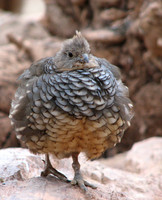
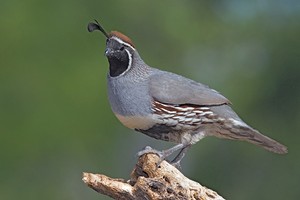
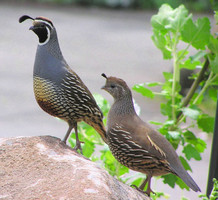

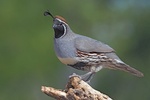
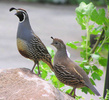

 Go to quick links
Go to quick search
Go to navigation for this section of the ToL site
Go to detailed links for the ToL site
Go to quick links
Go to quick search
Go to navigation for this section of the ToL site
Go to detailed links for the ToL site